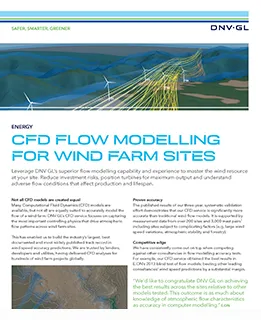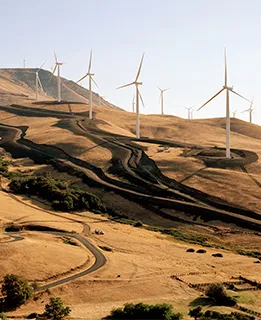计算流体动力学
业内最准确的气流建模工具有助于最大程度降低风险并增加风电场的收益
对于新的风电场,规划和建造是主要任务。投资者和其他利益相关方需要确保风险得以减轻才能放心。在优化风电场设计、降低不确定性和最大化收益方面,准确的气流建模是关键的一步。
准确的气流建模
我们的计算流体动力学 (CFD) 服务可提供最准确的气流模拟。我们会根据您现场的地形和气象数据,创造风力条件,从而以最小误差预测风速。这样,我们便可识别哪里风速最高,哪里风速最低,并预测您的电能输出 — 为优化您现场的设计提供有价值的意见或信息。
我们的尖端 CFD 模型可捕捉尾流效应和复杂地形(如,林地),以达到最高准确性。除了绘制风速图以外,我们的模型还可预测:
- 入流角
- 气流分离
- 风切乱流
我们还可让您深入了解影响风机设计的诸多因素。
备受世界信赖
我们的 CFD 服务已被独立认可为业内最准确的模型。这些模型已应用于各个大洲的数百个商用项目中。我们基于所有这些场地的数据不断验证我们的模型,因此您可以放心,我们能持续提供您所期望的准确性和可靠性。


